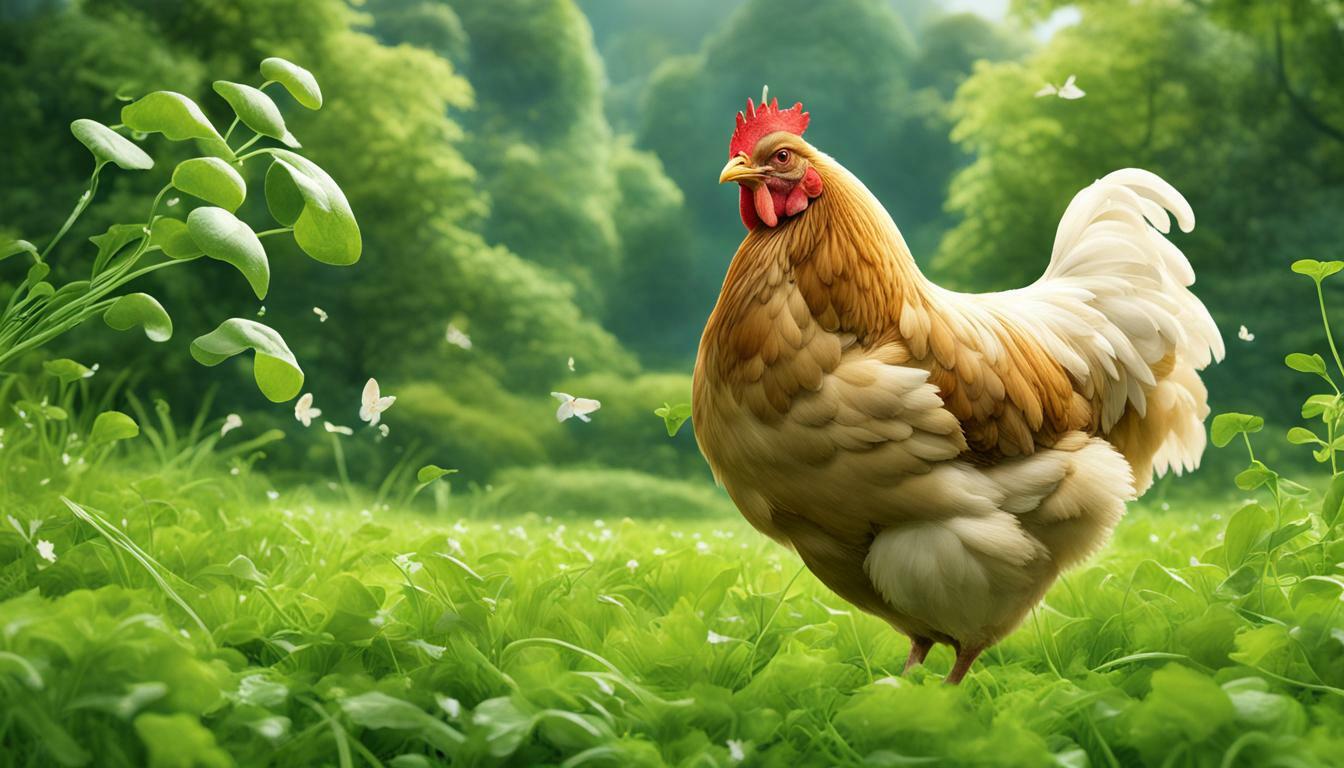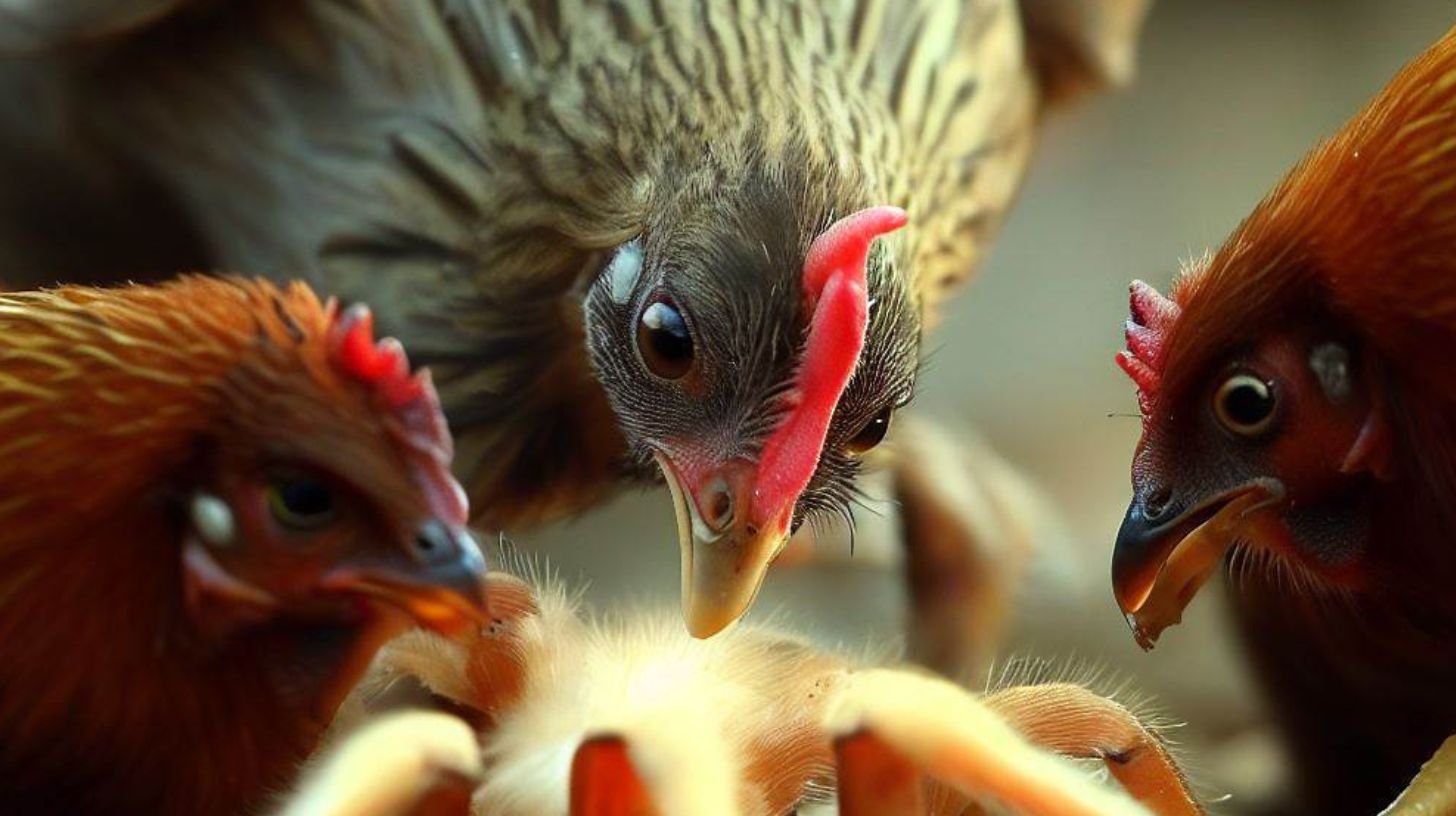Can Chickens Eat Watercress? Find out the Surprising Benefits!

Table of content:
- Is Watercress Safe for Chickens?
- What Are the Benefits of Feeding Watercress to Chickens?
- How Much Watercress Can Chickens Eat?
- Should I Give My Chickens Fresh or Dried Watercress?
- Can Chickens Eat Too Much Watercress?
- Do Chickens Like the Taste of Watercress?
- Is Watercress High in Nutrients for Chickens?
- Can I Grow Watercress for My Backyard Chickens?
- What Part of the Watercress Plant Can Chickens Eat?
- Final Thoughts
Watercress is a leafy green vegetable that is growing in popularity. It is nutritious and easy to add to salads, sandwiches, and more. Watercress also happens to be a great supplemental treat for backyard chickens. But can chickens eat watercress? Let’s take a closer look at the benefits and risks.
Is Watercress Safe for Chickens?
The simple answer is yes, watercress is safe for chickens to eat in moderation. Watercress contains high levels of important vitamins, minerals, and antioxidants that can support chicken health.
Watercress is dense in nutrients like:
- Vitamin C
- Vitamin K
- Calcium
- Iron
- Phosphorus
These are all beneficial nutrients for chickens. Watercress also contains omega-3 fatty acids and folate. So offering watercress provides health advantages.
However, watercress does contain oxalates. Oxalates can bind to calcium and cause a potential calcium deficiency if large amounts are eaten.
So as long as chickens eat watercress in moderation as part of a balanced diet, it can be a nutritious supplemental treat.
What Are the Benefits of Feeding Watercress to Chickens?
There are several excellent benefits to offering watercress to backyard chickens:
- Watercress provides supplemental nutrition from important vitamins, minerals, antioxidants, and omega-3s. This supports egg production and overall chicken health.
- It contains more vitamin C than oranges and more calcium than milk. These provide key immune system and skeletal support.
- The plant compounds lutein and zeaxanthin in watercress support eye health.
- Watercress provides beneficial antioxidants that reduce inflammation and cell damage.
- As a leafy green, it provides variety in their diet which chickens enjoy.
- Watercress has a slightly spicy, peppery taste that chickens tend to like.
- Foraging for wild watercress allows chickens exhibit their natural behaviors.
- As an edible forage crop, watercress can be grown as part of a mixed rotational pasture for periodic chicken grazing.
In short, adding watercress to a flock’s diet offers supplemental nutrients and health advantages. Chickens find it palatable and enjoy pecking at its leafy foliage. Watercress is one more way to mimic a diverse, omnivorous diet for optimal backyard chicken health.
How Much Watercress Can Chickens Eat?
Moderation is key when feeding chickens treats like watercress. While watercress offers excellent nutrition, it does contain oxalates as mentioned.
Oxalates bind to calcium in the body. Eating too much can potentially leach calcium from the body and cause deficiencies over time.
So it’s recommended chickens eat watercress just several times per week at most. Give them only a handful or two of fresh watercress per chicken. Or mix dried, chopped watercress into feed at no more than 1-2 tablespoons per day.
Watch to ensure your chickens don’t consume watercress in excess. Signs of a potential issue would include weak eggshells, changed egg-laying, or skeletal issues.
But when fed occasionally and in moderation, watercress makes an excellent supplemental addition to a backyard flock’s diet. The nutrients, variety, and foraging benefits are well worth it.
Should I Give My Chickens Fresh or Dried Watercress?
You can offer chickens either fresh or dried watercress. Both offer excellent nutrition.
Fresh watercress gives chickens foliage to nibble and offers moisture. The crisp, peppery texture also seems to entice picky chickens.
However, fresh watercress spoils quickly. So dried watercress offers more convenience for mixing into feed or leaving as a free choice supplement. Dried watercress retains most of its nutrition, though some water-soluble vitamins are reduced.
Growing and harvesting your own fresh watercress is enjoyable. But purchasing dried organic watercress can be more affordable.
Choose what fits best for your needs. Rotate both fresh and dried watercress as part of a varied diet. Your chickens will relish this bright green treat either way.
Can Chickens Eat Too Much Watercress?
Yes, chickens can eat too much watercress. As mentioned, the primary concern is oxalates binding to calcium. Consuming watercress daily or in large amounts could potentially cause a calcium deficiency.
So it’s ideal to feed watercress in moderation. Good guidelines are:
- Offer fresh watercress just 2-3 times per week. Give 1-2 handfuls per chicken.
- Mix dried, chopped watercress into feed at 1-2 tablespoons per day maximum.
- Avoid feeding watercress daily. Stick to several times a week at most.
- Watch for signs of calcium issues like weak eggshells, changed egg laying, or bone problems. Discontinue watercress if these arise.
- Feed a balanced diet. Watercress is great supplemental nutrition, but shouldn’t make up the bulk of their feed.
Following these tips allows chickens to gain benefits from watercress without risking potential toxicity.
Do Chickens Like the Taste of Watercress?
In general, backyard chickens seem to enjoy eating watercress. Its bright green color and crisp, juicy texture entice them to peck and nibble the leaves.
Watercress also has a fresh, mildly peppery or spicy flavor. This stimulating taste along with its crunch appeal to a chicken’s senses.
For picky chickens less interested in greens, try hanging bundles of watercress around their run. The movement and green color will attract their eye and foraging instincts.
Consider harvesting wild watercress and allowing chickens to graze it straight from the ground cover. This opportunity to exhibit natural behaviors will encourage eating.
Mixing chopped watercress into feeds like oatmeal, rice or scratch grains may also entice consumption. Offer watercress when eggs are forming to support uptake of its many nutrients.
Observe your unique flock. But most backyard chickens relish the distinctive, crisp taste of fresh watercress. It satisfies their omnivorous diet and desire for tasty vegetation.
Is Watercress High in Nutrients for Chickens?
Yes, watercress contains an impressive array of vitamins, minerals, and beneficial plant compounds. That makes it a great occasional supplement for backyard chickens.
Some key nutrients watercress provides include:
- Vitamin C – More than an orange per ounce for strong immunity.
- Vitamin K – Supports blood clotting.
- Folate – For cell growth and replication.
- Calcium – For proper skeletal strength and egg shell formation.
- Phosphorus – Important for bone health and metabolism.
- Lutein and Zeaxanthin – Support eye and vision health.
- Iron – Helps transport oxygen in blood.
- Potassium – For water balance and nerve transmission.
- Antioxidants like kaempferol and quercetin – Reduce inflammation and cell damage.
- Omega-3 Fatty Acids – Support brain function and skin/feather health.
The combination of traditional vitamins and minerals along with protective plant compounds make watercress excellent periodic nutrition. When fed in moderation, it can really boost backyard chicken health, egg quality, and wellbeing.
Can I Grow Watercress for My Backyard Chickens?
Absolutely! Growing your own watercress is rewarding and offers chickens the freshest treat possible. Plus you control the growing conditions to avoid contamination.
Watercress thrives hydroponically or in very wet soil. Fortunately it grows easily in backyard systems like:
- Small paddocks or raised beds – Grow watercress close to your coop for convenient harvesting.
- Aquaponics systems – Watercress flourishes being directly watered by aquatic fish effluent. The edible foliage filters this fertilizer.
- Container gardens – You can cultivate watercress in buckets or other vessels. Partial shade helps reduce bolting.
- Hydroponic systems – Watercress can grow directly in nutrient water solution. The roots absorb constant moisture.
- Indoor sprouts or microgreens – Grow trays of nutritious watercress sprouts year round for chicks and chickens.
When grown outside, offer chickens trimmed watercress leaves first to allow regrowth. Fence enclosing watercress is wise to prevent over-foraging.
Cultivating your own watercress is an easy way to provide chickens with the freshest, most mineral-rich greens possible.
What Part of the Watercress Plant Can Chickens Eat?
Chickens can eat all parts of the watercress plant, including the leaves, stems, and flowers. The most nutritious portions for chickens are the leaves and tender stems.
The leaves contain the highest density of important vitamins, minerals and antioxidants. These give chickens the biggest nutritional benefit.
The stems are entirely edible as well. They just offer a bit less concentrated nutrition than the leaves. But chickens often enjoy stripping and nibbling the smaller, tender stems.
Once watercress bolts and produces flowers, these yellow blossoms are also edible for chickens. They add interest and variety to their diet. However the flowers themselves are not as nutritionally valuable as the foliage.
In summary, all components of the watercress plant can be fed to chickens. Focus mainly on the leaves, with the stems and flowers as added interest. Discard any thicker, woodier stems that chickens avoid.
Final Thoughts
When fed occasionally in moderation, watercress makes an excellent treat for backyard chickens. It provides a boost of beneficial nutrients like vitamins, minerals, and antioxidants that support chicken health and productivity.
The small dose of calcium provided by watercress improves bone strength and proper egg shell formation. Chickens also relish the crisp, juicy texture of fresh watercress.
Growing your own watercress allows you to harvest the freshest greens possible for your flock. It’s easy to cultivate in small beds, containers, or hydroponic systems.
Always feed watercress in moderation to avoid potential issues from excess oxalates. Offer just a handful or two, 2-3 times per week. Mixing dried watercress into feed also provides supplemental nutrition.
Watercress delivers a nutritious crunch that most backyard chickens will gobble up readily. Add this vibrant, healthy green to your flock’s diet a few times a week for happy, productive hens.
Welcome. I’m Adreena Shanum, the proud owner of this website, and I am incredibly passionate about animals, especially poultry. I founded adreenapets.com as a labor of love, stemming from my desire to share my knowledge and experiences with poultry enthusiasts worldwide.




